The 5 Most Delightfully Cheesy Dinosaur Parks

Petrified Creatures Museum of Natural History. Richfield Springs, New York.
Dinosaurs were discovered in the 1920s, and a century later Arthur Conan Doyle in The Lost World cemented their image in the minds of ordinary people – they became part of pop culture. Along with this, theme parks began to appear in the U.S. in the 1930s. They grew along the federal highways like mushrooms, and most of them were just awful – about the level of street art from tires.
Most of these places couldn’t withstand the battle of time and went extinct, like the dinosaurs themselves. But some of them have remained and delight in their prehistoric, idiotic, brutal beauty. Now these concrete freaks look like kitsch, but once children dreamed of going to these parks and seeing “real” Tyrannosaurs and Diplodocs. Especially in the good old days it was allowed to climb on them, even if it was life-threatening, an entertainment we have lost.
Petrified Creatures Museum of Natural History. Richfield Springs, New York.
This roadside dinosaur park offered up lumpy neon thunder lizards in the name of kitsch and education.


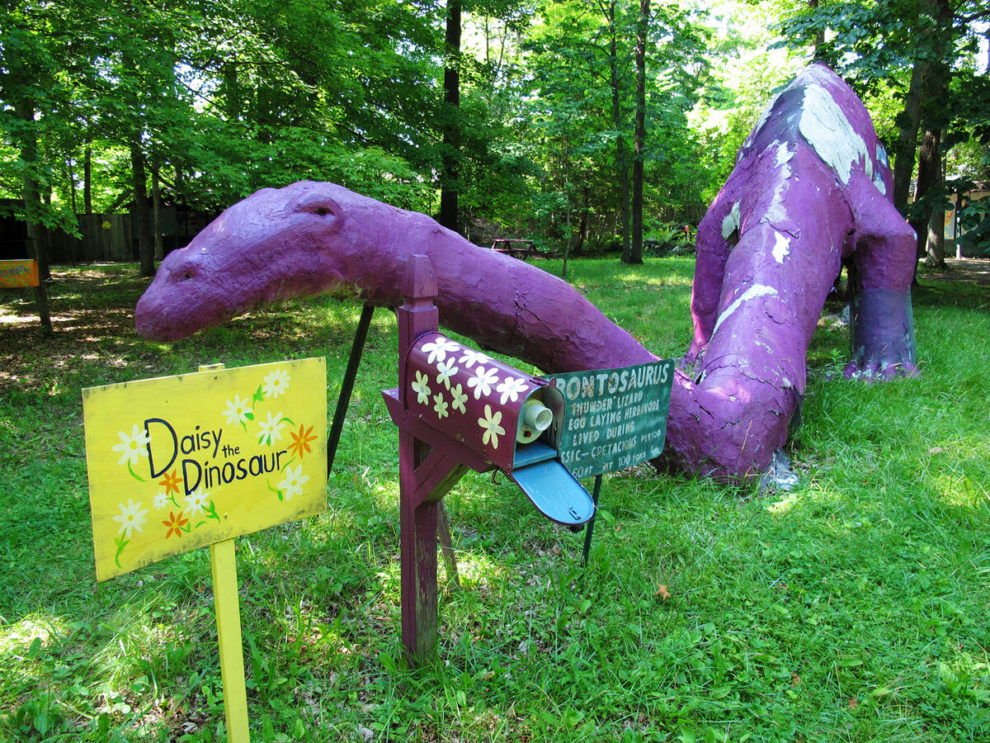
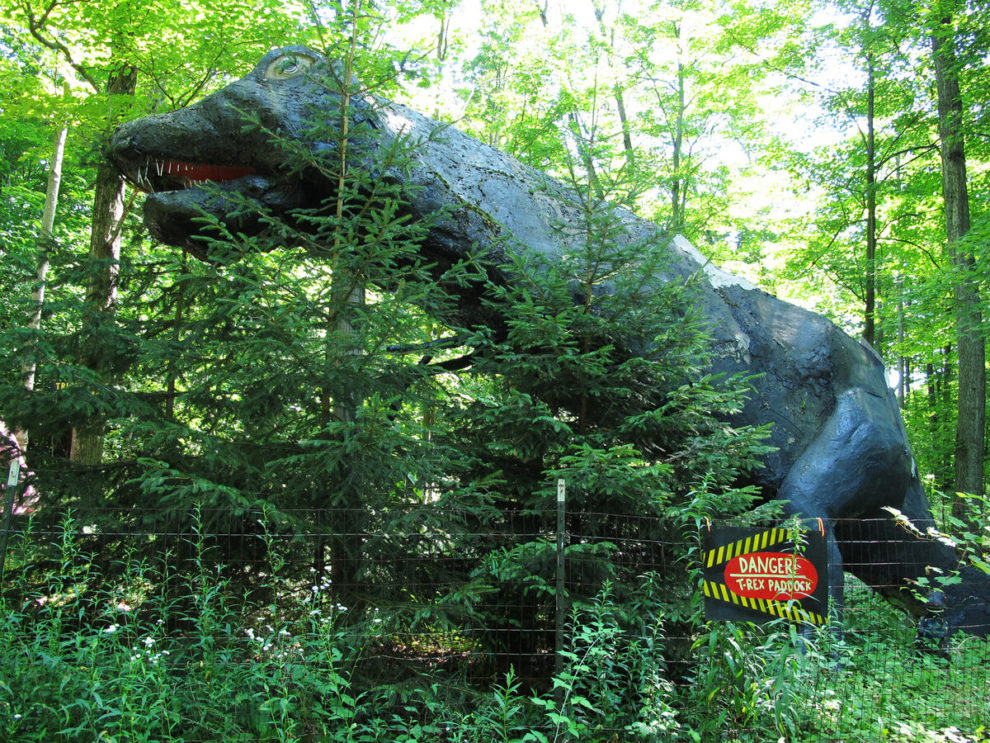
Originally opened in 1934, the Petrified Creatures Museum of Natural History is a classic roadside dinosaur park that features misshapen creatures and a mineral-filled gift shop, but it sets itself apart with its brightly colored dinosaurs and acceptance of camp.
Created in the mold of other, similar roadside dinosaur parks, each designed to entice families on road trips to pull over and buy marked up fossils from the gift shop while taking in the homemade prehistoric creatures, the Petrified Creatures Museum embraces its kitsch status. Each of the concrete dinosaurs which stand in the backyard of the gift shop/house seems to have been molded from a vague memory of a picture of a dinosaur the creator once saw.
Prehistoric Gardens. Port Orford, Oregon.
A collection of colorful dinosaurs hidden in an actual rainforest.


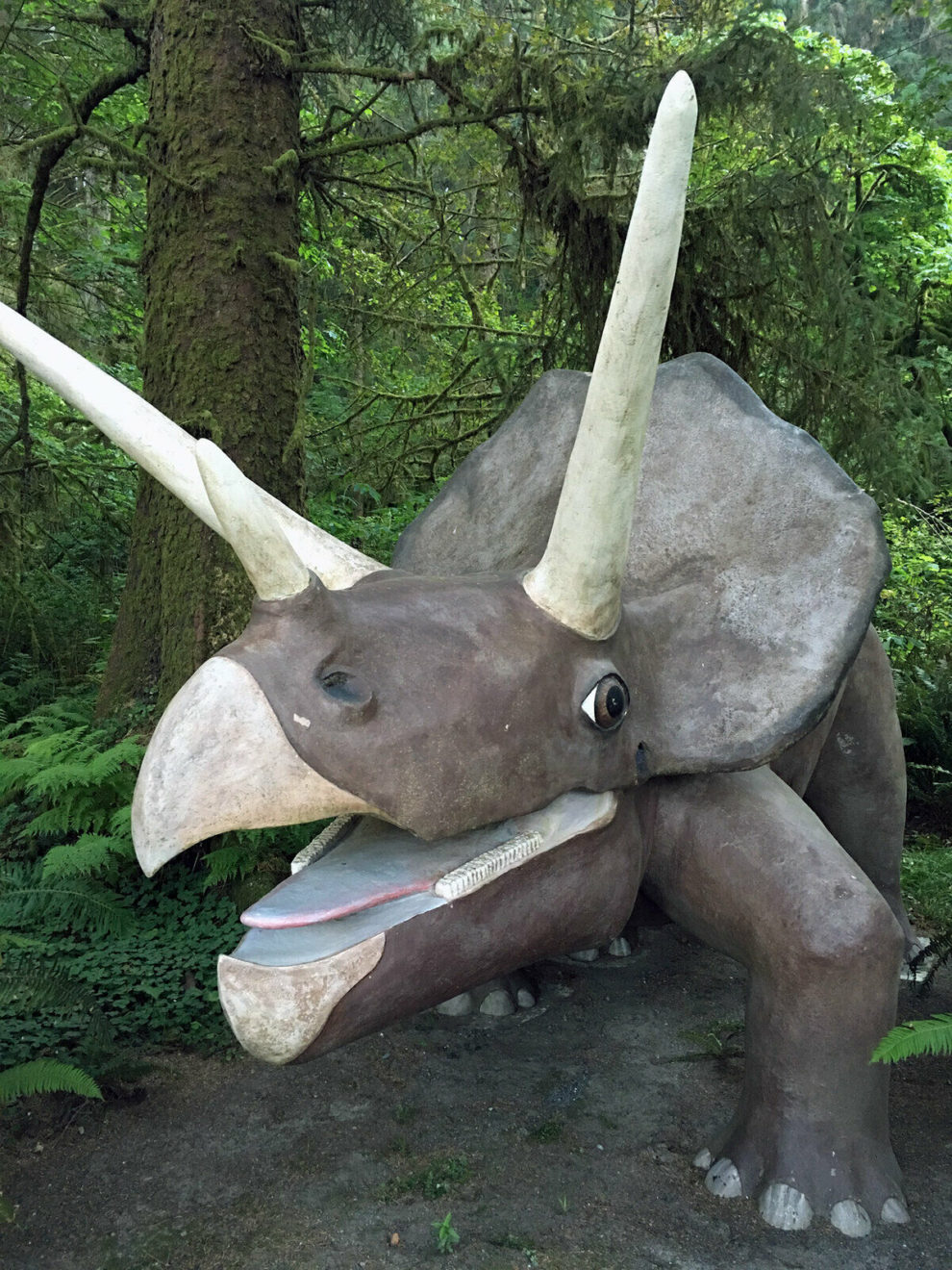


Oregon’s Prehistoric Gardens is a classic roadside attraction featuring life-sized sculptures of dinosaurs and other prehistoric animals in a variety of psychedelic hues.
This collection of concrete monsters was began in 1953 when the attraction’s late creator Ernest Nelson began sculpting size-accurate dinosaurs on his property, and then finally opened to the public as the Prehistoric Gardens in 1955. Nelson traveled to the Smithsonian in NYC and researched fossils to ensure the life-size replicas were as scientifically correct as possible. He would go on to construct 23 dinosaurs in total over the next 30 years. The largest sculpture in the park is the Brachiosaurus, which is an astounding 86 feet long and 46 feet tall! Once known for their bright, playful coloration, the dinosaur sculptures are now a bit faded and weathered, but still exciting for antediluvian enthusiasts nonetheless.
Dinosaurland. White Post, Virginia.
Outsider art meets paleontology at this roadside reptile repository.

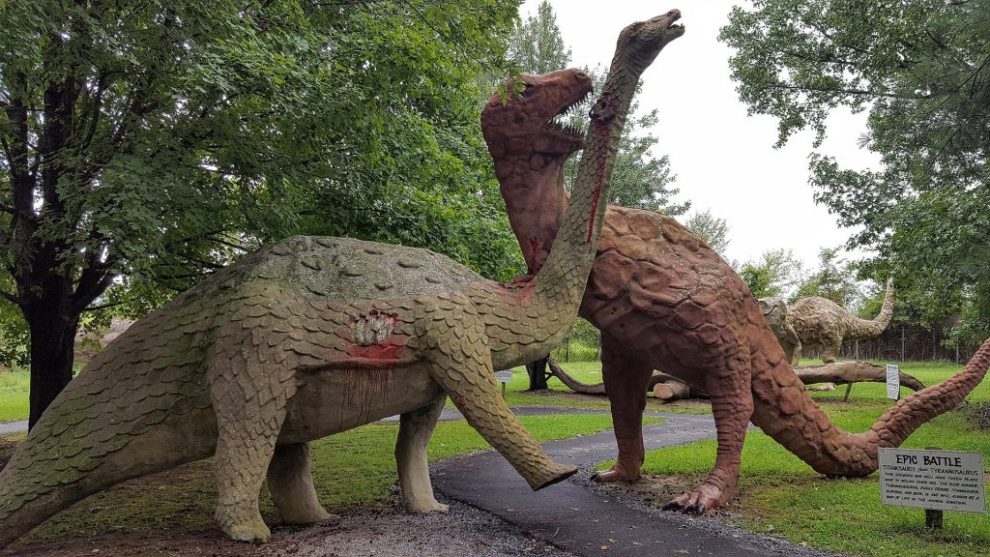
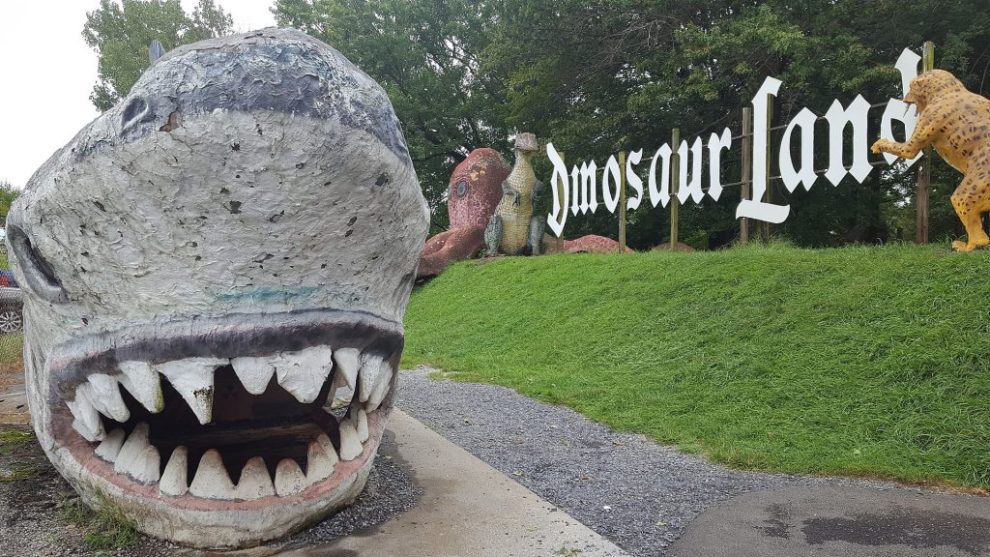

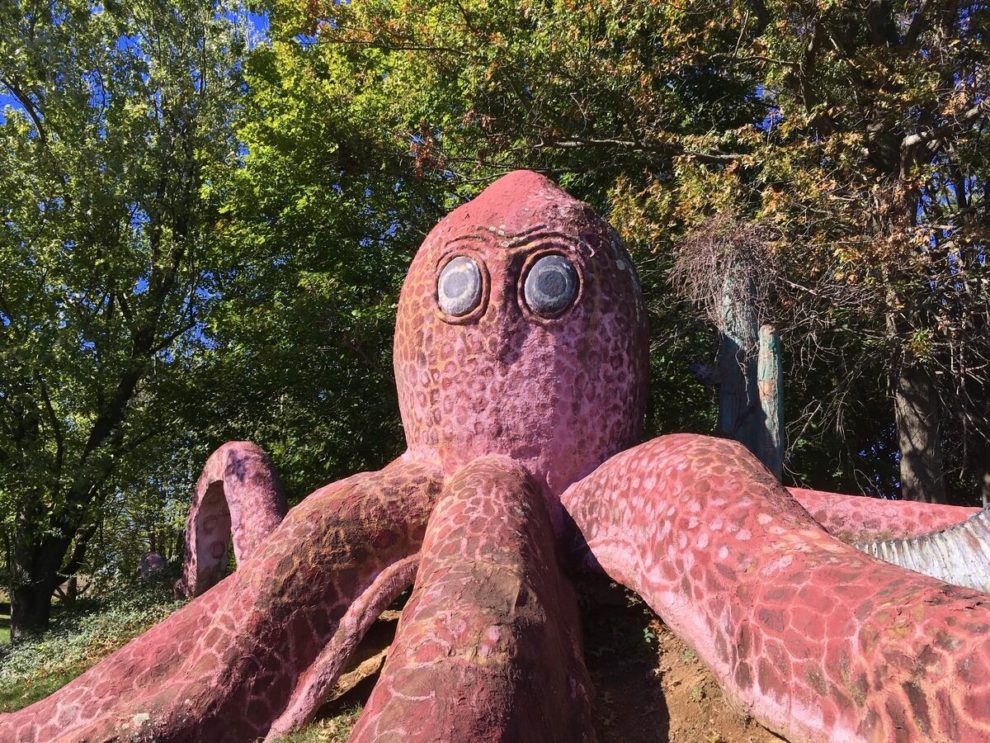
Originally started as a small gift shop, Dinosaurland’s owner took inspiration from a local mini-golf course’s prehistoric statuary and began building his own in the late 1960s. After a number of the homemade beasts were created, the gift shop was officially retitled “Dinosaurland” and a new sign mimicking the “Disneyland” sign was added. The shop’s owner continued to add new statues as the decades went by, like aggressive Tyrannosaurses and doe-eyed Stegosauruses. The skewed proportions and fantastic posing remained while Dinosaurland branched out slightly, adding such eye-catchers such as a King Kong statue (20 feet tall) and a Jaws statue (60 feet tall)!
Depression Era Dinosaur Park. Rapid City, South Dakota.
One of America’s first dinosaur parks gives a window into Depression-era paleontology.



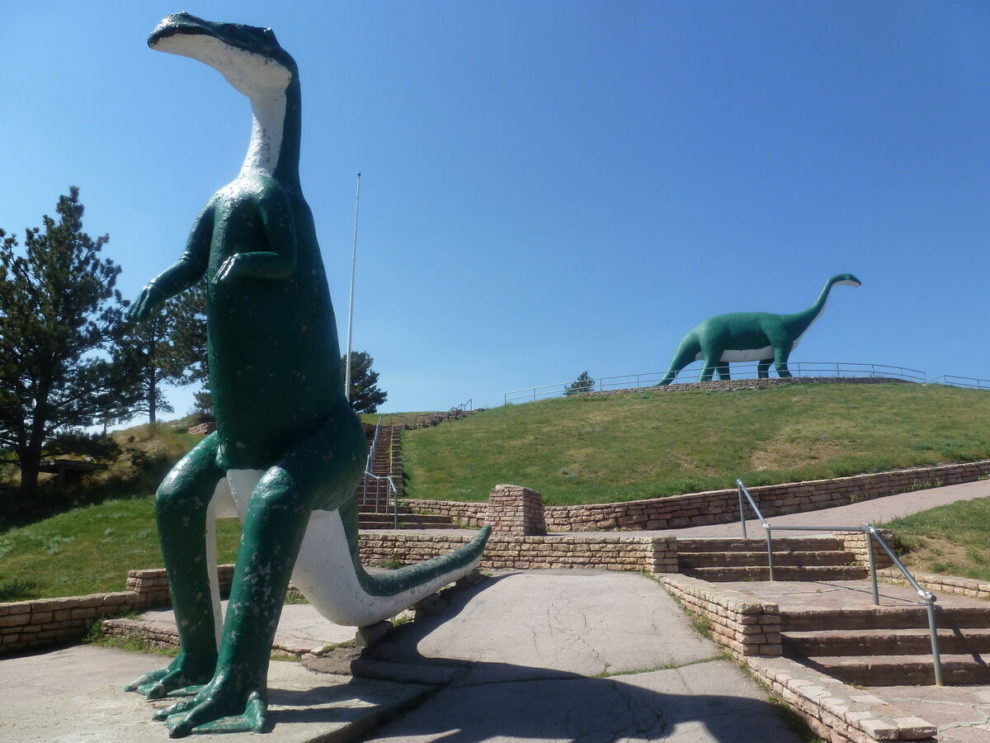

Ever since learning of their existence, we’ve been piecing dinosaurs together, taking them apart, piecing them back together with different heads, naming them, debating them, and renaming them. In the 1800’s, competitiveness in the field of paleontology led to some hasty, not-so-accurate identifications, and occasionally downright fabrications regarding these jurassic giants we are so anxious to know everything about.
With advances in genetics and other research methods, we are now learning all kinds of new things about the colossal vertebrates that could have laid waste to the strip malls that inhabit their old stomping grounds – and many of the mistakes that were made before these advances are now being corrected.
Baconao Park. Santiago de Cuba, Cuba.
Roam the cradle of the Cuban Revolution with life-sized dinosaurs.

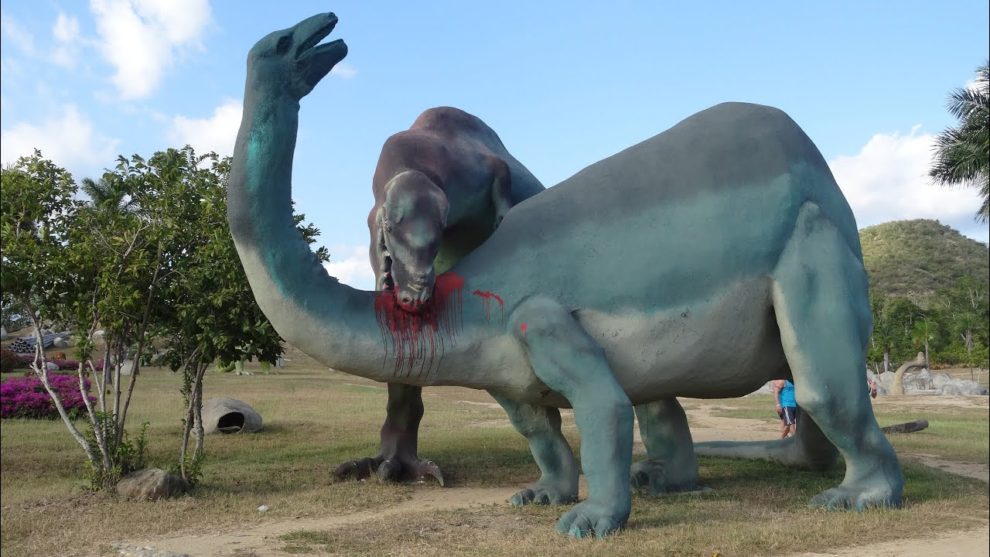
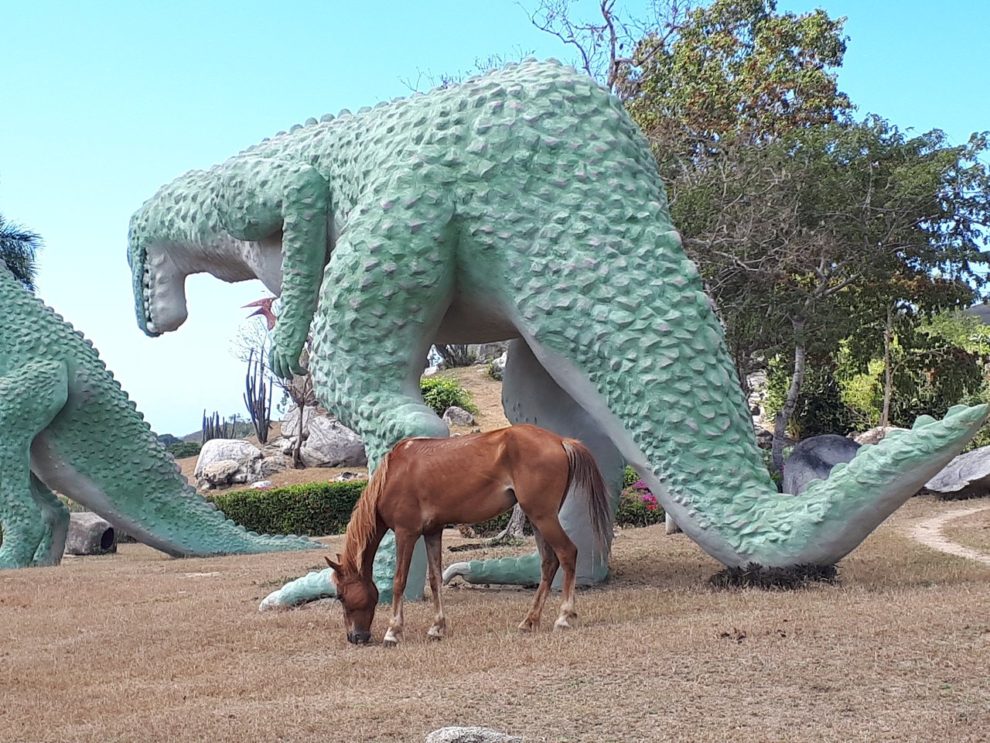
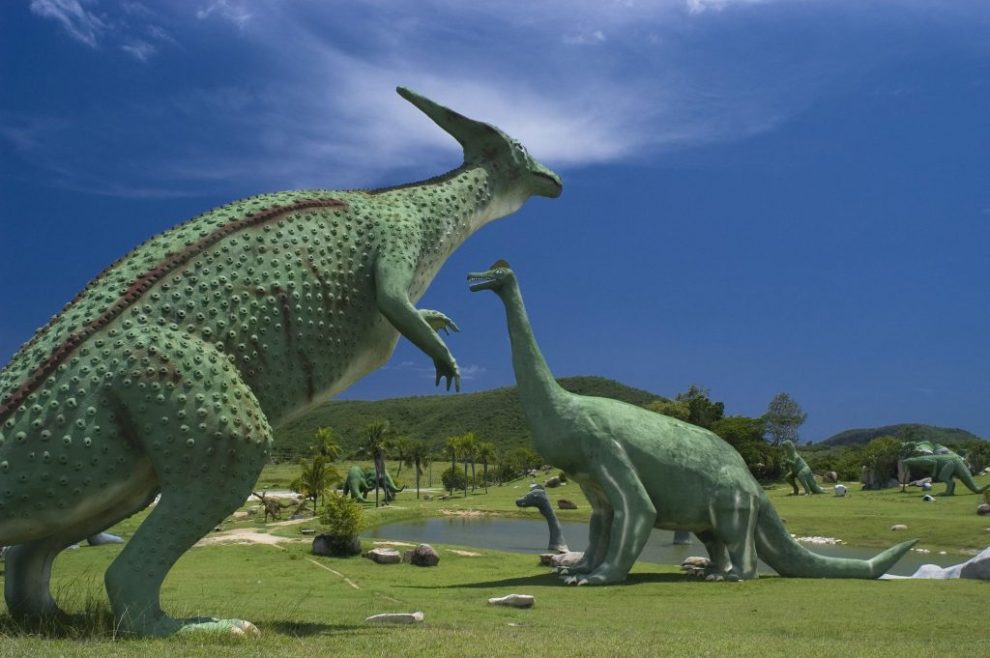
Santiago de Cuba is known as the “Cradle of the Revolution.” The southern city holds a claim to fame in Cuba for being the staging area for Fidel Castro’s raid on the Moncada Barracks in 1953. Although the raid led to Castro’s arrest, it is accepted as the beginning of the Cuban Revolution.
With this nationalist framework, Baconao Park, 20 kilometers from Santiago de Cuba, has developed as a microcosm of Cuba’s history and culture. Although at times the attractions in the park seem unrelated and even a little bizarre, they all recall one of the glories of Cuba’s past and they start from the very beginning. One of the main highlights of the park is the Valle de Prehistoria, a few acres of tropical vegetation complete with 200 roaming dinosaurs of the Jurassic Period. Adding to the strangeness of the exhibit, the dinosaurs were all constructed by inmates from a local prison.

